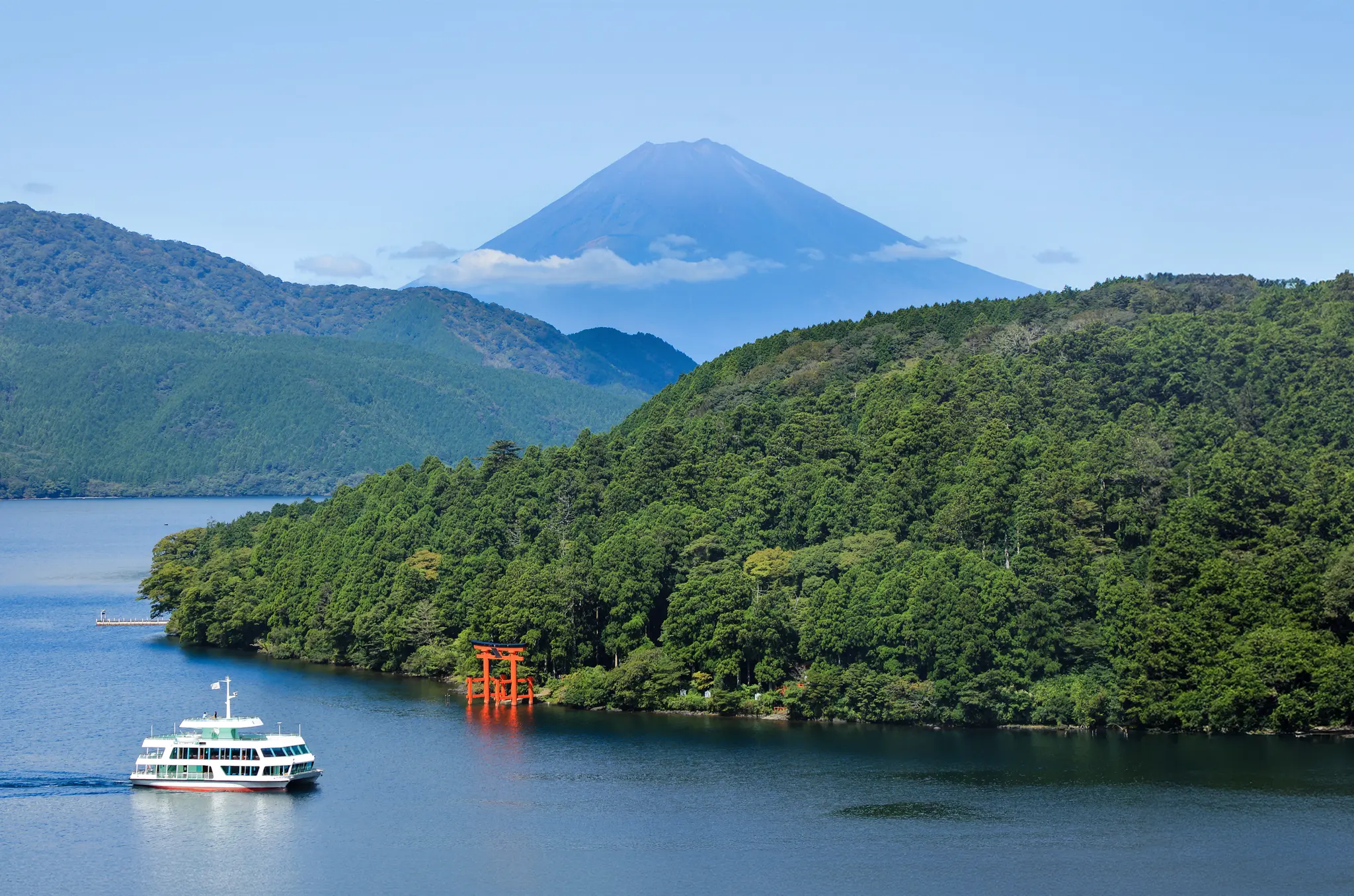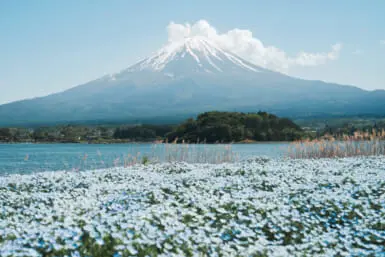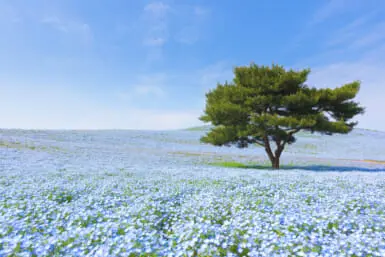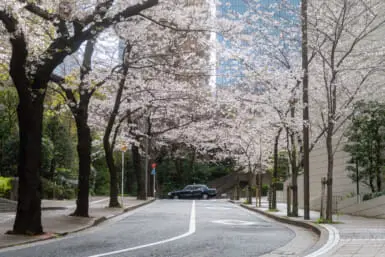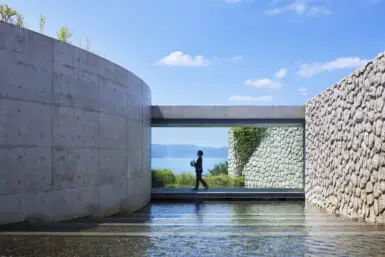A short train ride away from Tokyo, Hakone is known for its therapeutic hot springs, captivating museums and stunning views of Mount Fuji. While a day trip from the capital is possible, with so much to see and do, it is worth spending at least two days there to fully appreciate the allure of this enchanting little town. And that’s what we recently did.
Traveling to Hakone
We departed from Shinjuku Station on the Odakyu Electric Railway’s Romancecar, a limited express train that reaches Hakone-Yumoto Station in under 90 minutes. Unfortunately, the observation deck seats at the front of the train were booked up, but it was still a very pleasant journey, with clear views of famous sights such as Mount Fuji and Odawara Castle.
Day One: Art, Gardens, and Lakeside Luxury
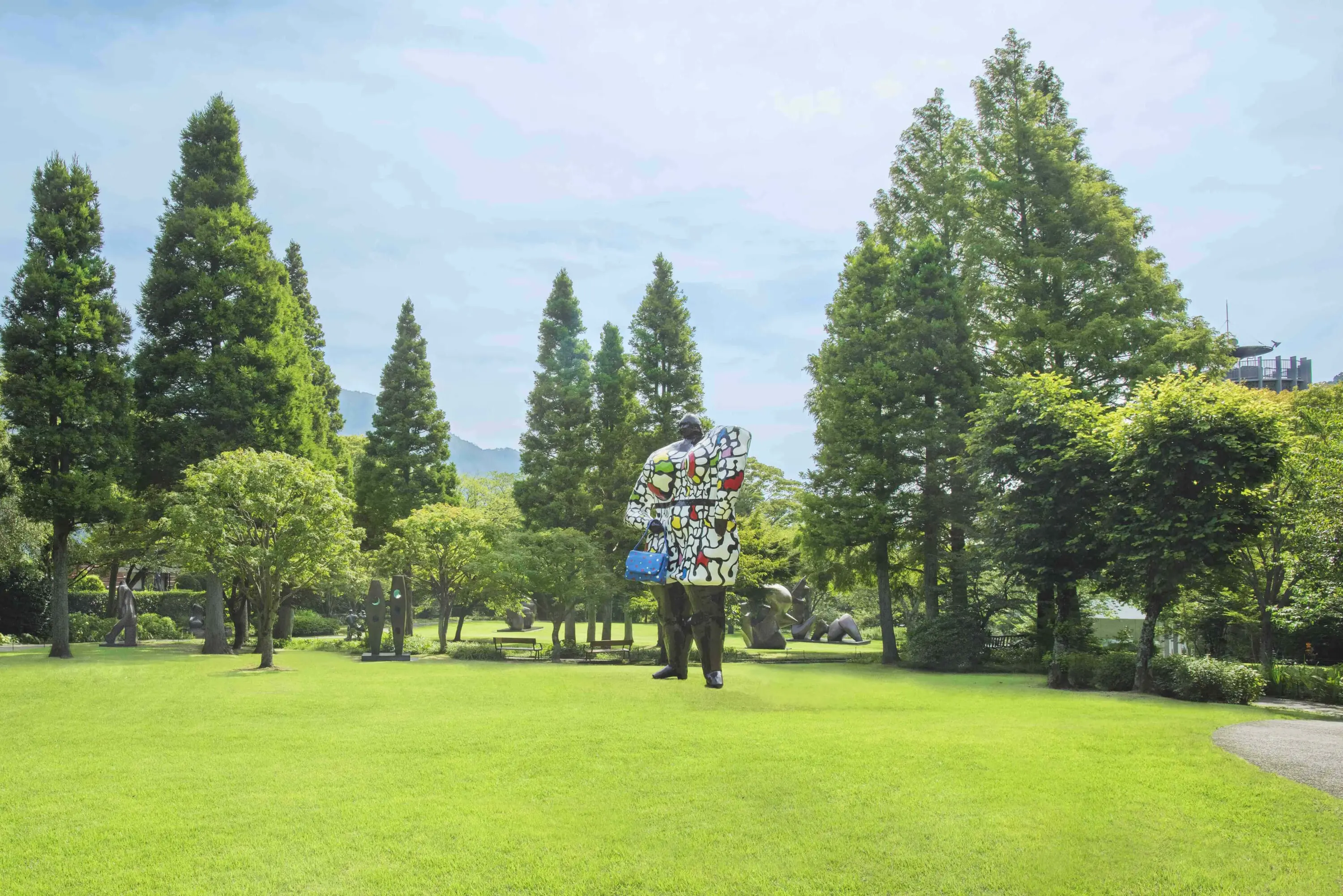
The Hakone Open-Air Museum
After arriving at Hakone-Yumoto Station, it was then just over 30 minutes on the Hakone Tozan Railway Line to Chokoku no Mori Station, which is a short walk from the Hakone Open-Air Museum. Spread across 70,000 square meters of green garden, the museum hosts more than 1,000 pieces, including approximately 120 sculptural works on permanent display.
One of the standout pieces at the museum is unquestionably Gabriel Loire’s “Symphonic Sculpture,” which you can enter and climb to the top using the spiral staircase. Inside, the 18-meter tower is enclosed by colorful stained-glass and the view from the top is spectacular. Other highlights at the museum include “Miss Black Power” by Niki de Saint Phalle, Bukichi Inoue’s “my sky hole” and the Picasso Pavillion.
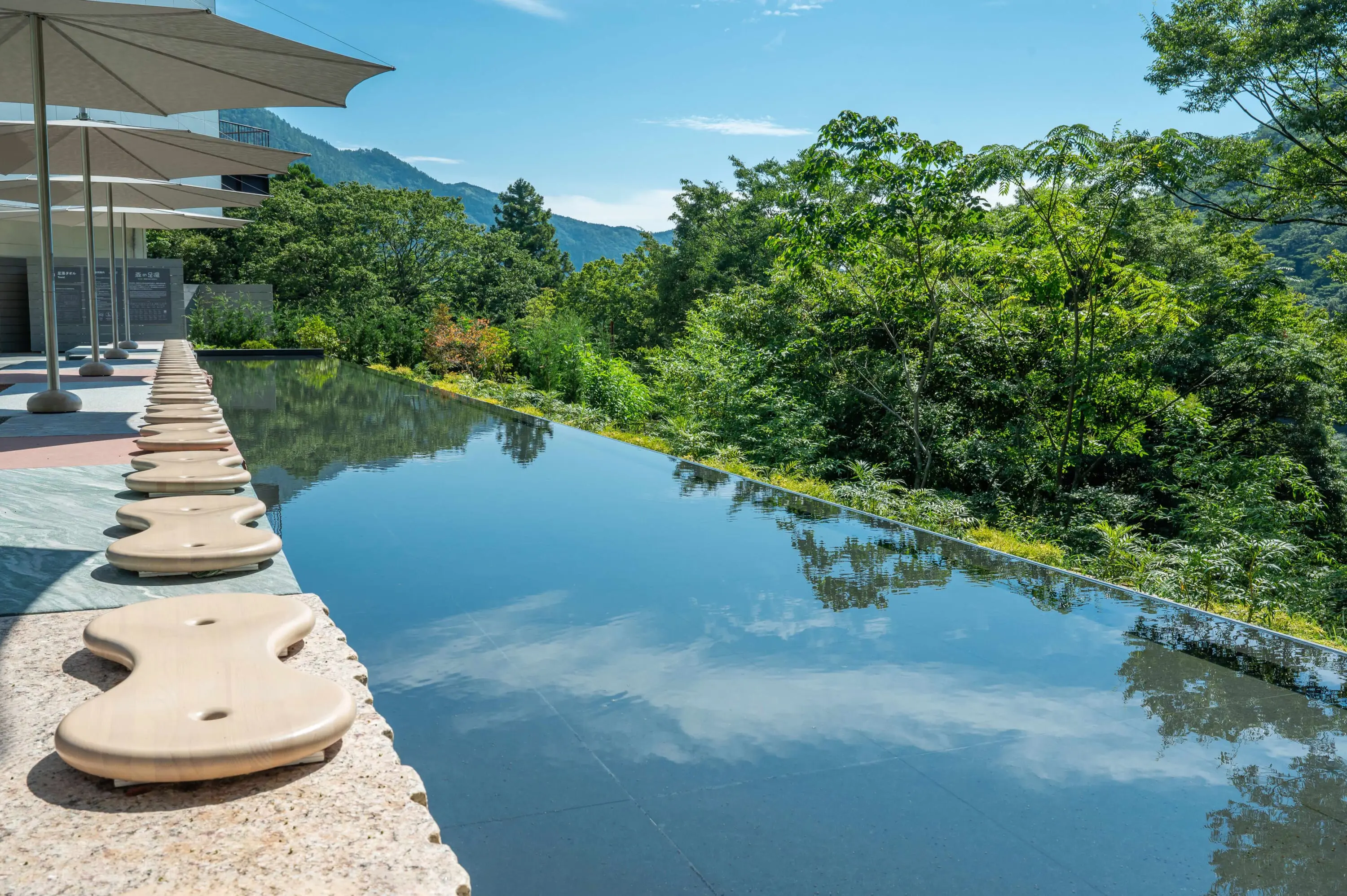
Last year, the Mori no Ashiyu (Foot Bath) was renovated and reopened. Here, visitors can unwind while taking in the breathtaking views of Hakone’s lush forest, accompanied by the soothing sounds of birds singing, flowing streams and the gentle rustle of the wind.
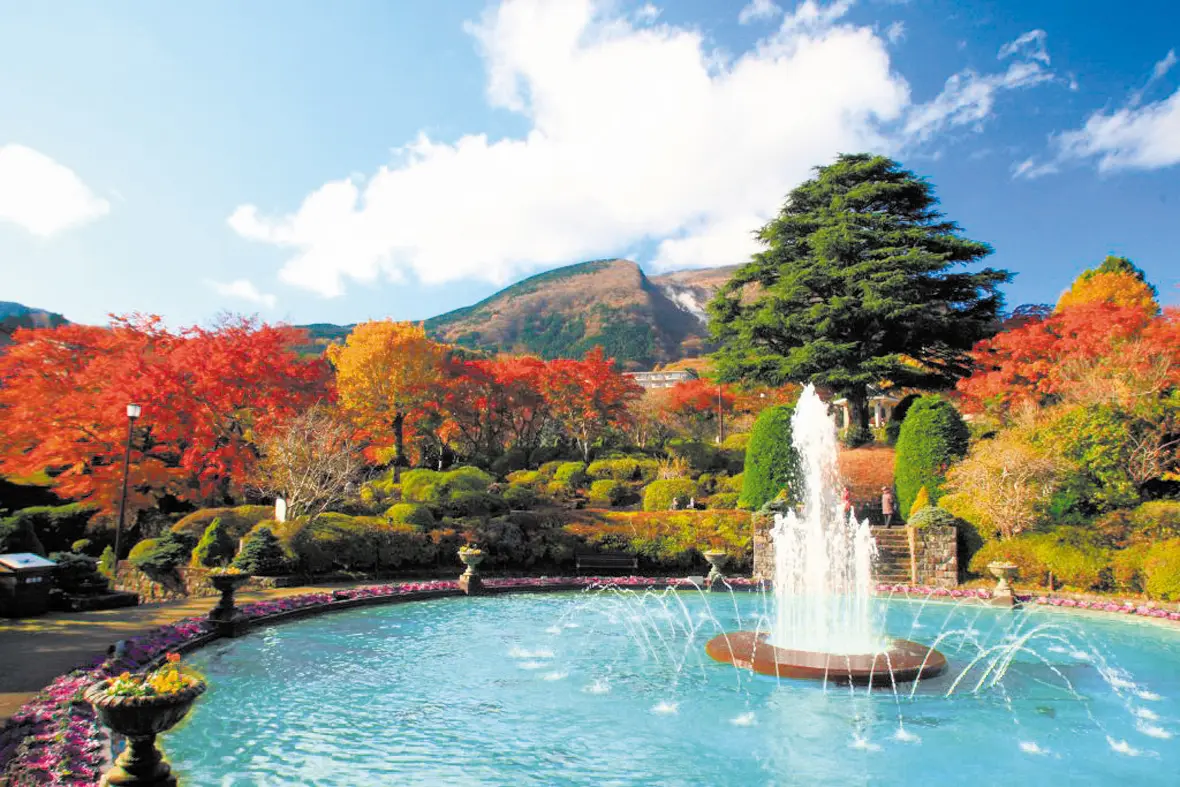
Gora Park
From the open-air museum, it is just over 15 minutes on foot up a slope to Gora Park, Japan’s first French-style garden. Free for anyone with the Hakone freepass (see below), it is famous for its multitude of flowers and its symmetrical design with a pond and a large fountain in its center. Boasting rose, herbal and tropical botanical gardens, it’s a very peaceful and picturesque location for an afternoon stroll.
Feeling a little hungry after so much walking, we decided to take a short break in the park’s cafe, where we sat on the terrace overlooking the fountain. Our waiter highly recommended the Gora Park curry, which, we were told, contains generous amounts of local ingredients that are gently simmered for a long time. It certainly didn’t disappoint. We were fortunate, though, as it’s limited to 40 servings a day and often sells out.
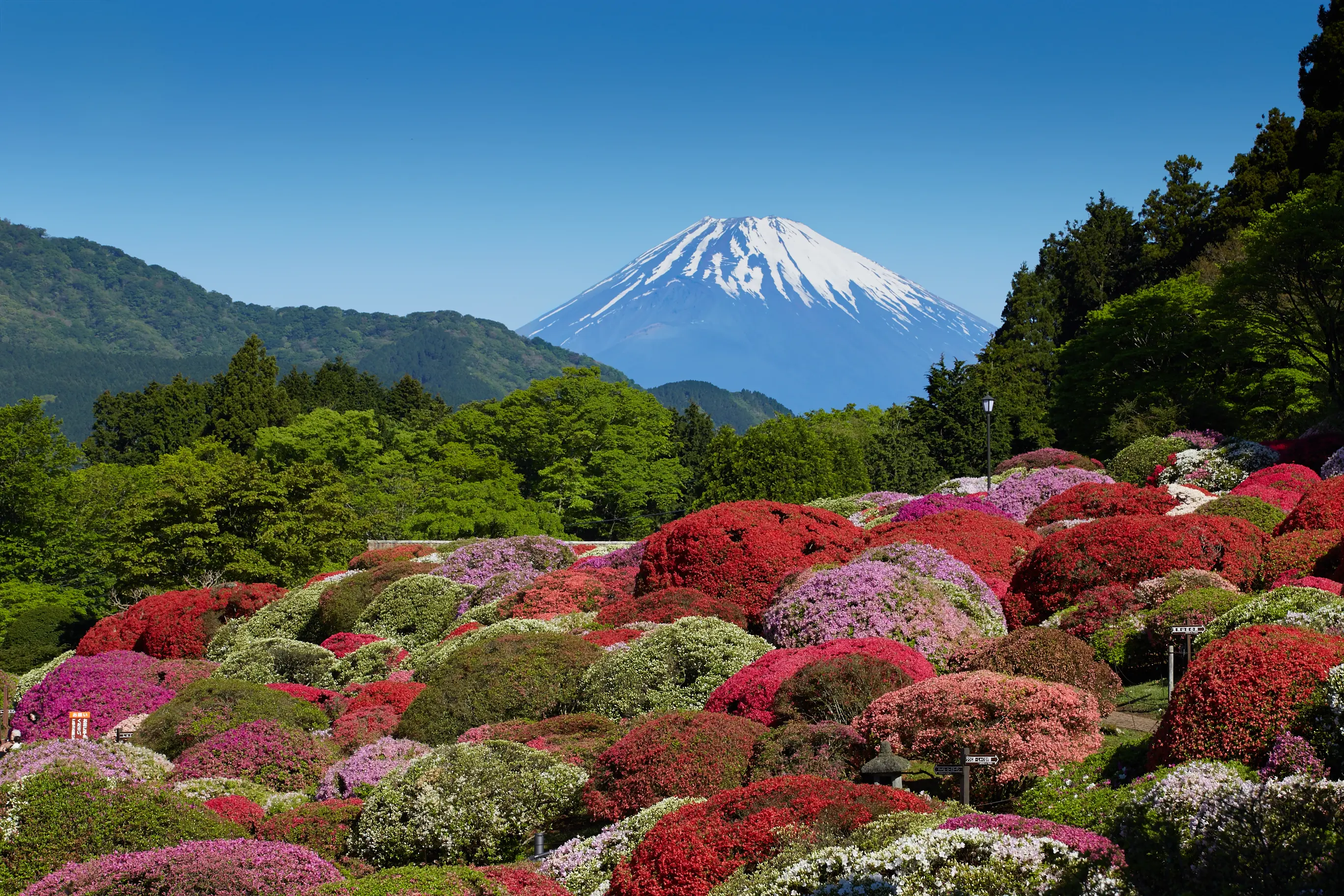
Odakyu Hotel de Yama
After departing Gora Park, we briefly considered dropping by at the nearby Hakone Museum of Art, but feeling a bit tired, we decided instead to head to our hotel, which was around an hour away from Gora Station via train and bus. We stayed at Odakyu Hotel de Yama, an elegant and historic accommodation founded in 1948 that was formerly the vacation home of industrialist Koyata Iwasaki. The hotel is just a stone’s throw away from Ashinoko, Hakone’s iconic lake that was formed by a volcanic eruption 4,000 years ago.
As well as boasting stunning views of the lake and Mount Fuji, Odakyu Hotel de Yama is also renowned for its soothing hot spring bath, Tsutsuji no Yu. After a relaxing dip in the alkaline water and a session on the massage chair, it was then time to get ready for our dinner at Vert Bois, the hotel’s French restaurant. We were served a delightful seven-course meal featuring, among other things, marinated Tasmanian salmon, autumn vegetables and Hungarian duck breast, accompanied by a couple of glasses of red. It was the ideal way to round off what had been a very pleasant day.
Day Two: Spiritual Sites, Scenic Cruises, and Volcanic Wonders
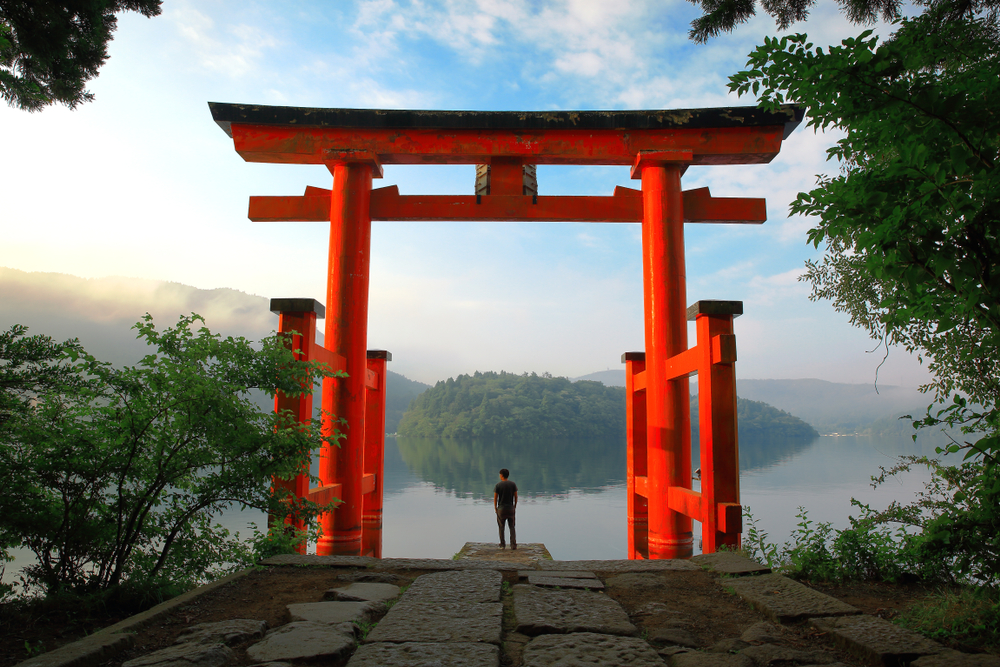
Hakone Shrine
With checkout not until midday, we decided to make use of the hotel facilities in the morning, starting with another dip in the onsen before heading to breakfast. Though the Japanese restaurant, Tsutsuji no Chaya, was very tempting, we opted for Vert Bois again due to the eggs Benedict, bacon and smoked salmon. After finishing eating, we then took a gentle stroll around the vast garden overlooking Ashinoko. Though it displays a variety of color no matter the season, the best time to visit is in May, when the vivid red azalea bushes — around 3,000 of them — are in full bloom.
After checking out, we made a brief stop at the hotel’s French cafe, Salon de thé Rosage, for a cup of tea and chocolate cake. It was then just a short walk to Hakone Shrine and its famous Heiwa no Torii (Gate of Peace). Standing proudly on the edge of the water, it’s a hugely impressive site that attracts a large number of visitors, so you can usually expect long lines to get a picture in front of it. Behind the gate is a set of 89 steps flanked by lanterns that lead to the main shrine building where people pray for wealth, happiness and love.
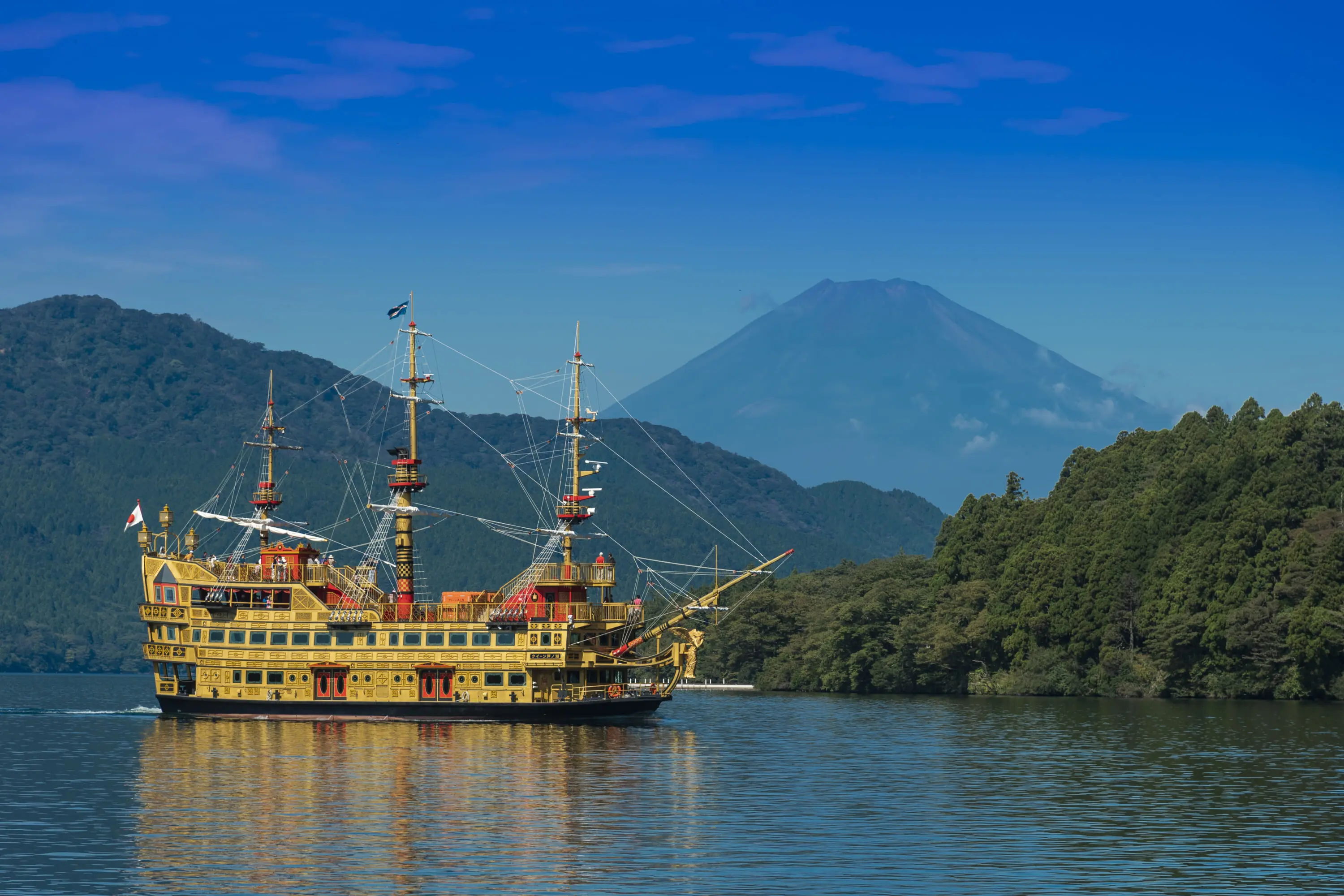
Ashinoko on a clear day
A Sightseeing Cruise
From Hakone Shrine, it was a scenic walk along the lake to Motohakoneko Port to board one of the city’s famous pirate ships. We got on “The Victory,” a blue and black vessel that is modeled on an English battleship from the 18th century. The president of the Hakone Sightseeing Cruise was reportedly inspired by Disneyland when he came up with the idea for the family-friendly ships, some of which have been fitted out with cannons, pirate statues, 3D art, treasure chests and a variety of other features designed for kids to enjoy.
The other main reason why Hakone Sightseeing Cruise is so popular is the 360-degree views from the deck. The sight of Hakone Shrine’s torii gate seemingly floating on the water with Mount Fuji standing majestically in the distance is one of Japan’s most iconic images. Unfortunately, on this particular day, the country’s most famous mountain was hiding due to the overcast conditions, but the journey was still a delightful one with the fog creating an eerie and dramatic landscape.

Owakudani
We were on the ship for less than 30 minutes before disembarking at Togendai Port to get on the Hakone Ropeway. One of the longest cable cars in the world, it makes for a magnificent aerial journey, particularly when passing over the geological marvel that is Owakudani. Meaning “great boiling valley,” Owakudani was created during the last eruption of Mount Hakone around 3,000 years ago and is known for its hot springs and fumaroles resulting from groundwater heated by bodies of subsurface magma.
The main volcanic area with steam vents and bubbling pools is just a few minutes on foot from Owakudani Station. A hotbed of geothermal activity, it feels like you are stepping into a mythical realm. The site is also popular for its view of Mount Fuji — again not visible on this day — and its black eggs, which, according to local lore, will add seven years to your life. They are immersed in natural spring water for an hour at a temperature of 80 degrees Celsius, before being steamed at 100 degrees for 15 minutes in steel baskets. We watched them being boiled, before giving them a try.
Note: Access to the Owakudani Nature Study Path requires reservations.
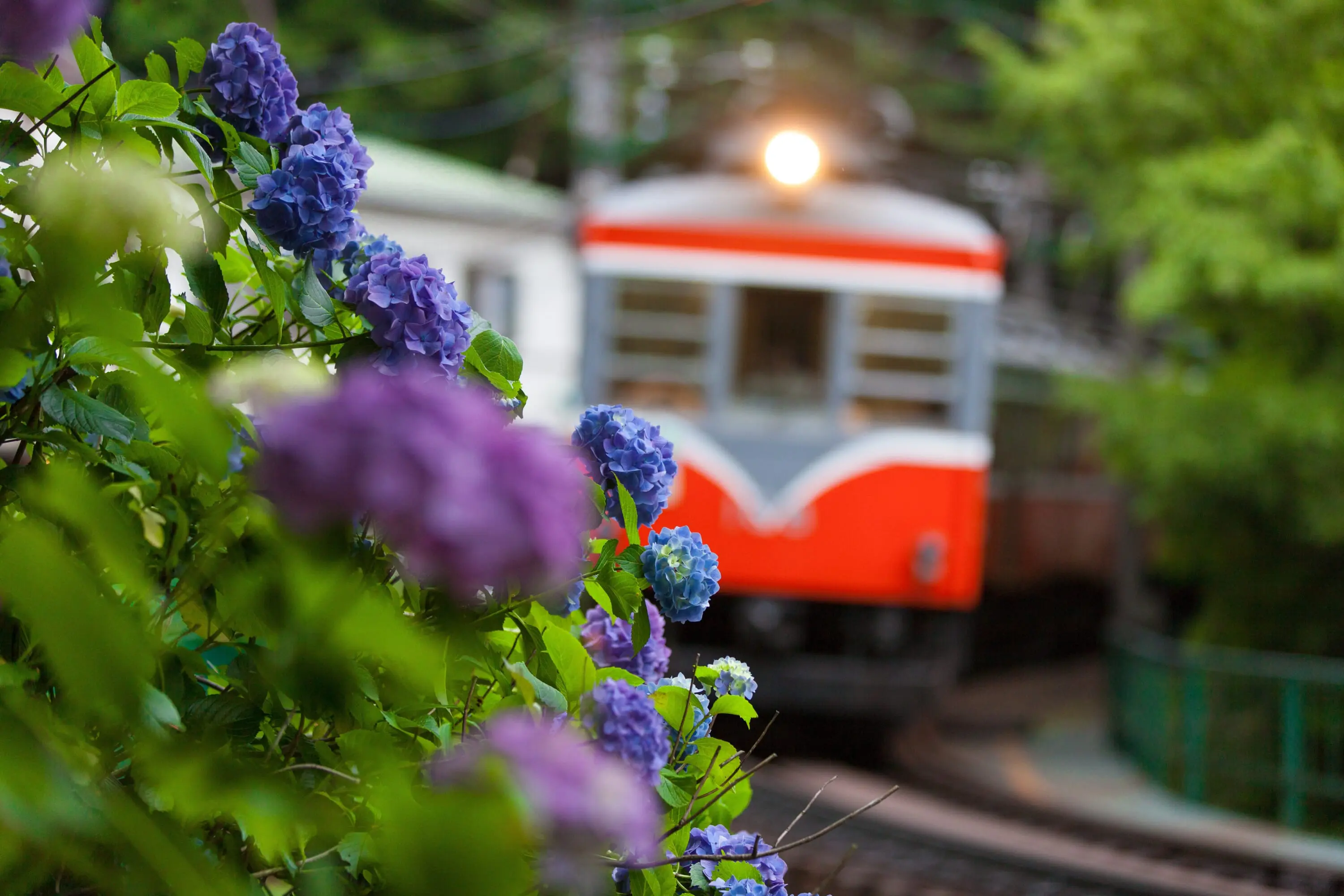
The Hakone Freepass
With the evening drawing in, we headed back to Hakone-Yumoto Station via the cable car and the Tozan Railway Line. Both were covered by the Hakone Freepass that we purchased at Shinjuku Station the previous morning. The pass covers unlimited rides on eight modes of transportation in Hakone, including the pirate ships, plus the round-trip from Tokyo on the Romancecar (a Limited Express Ticket with seat reservation is also required).
For the route between Shinjuku and Hakone-Yumoto, the two-day pass costs ¥6,100 for adults and ¥1,100 for children. Additionally, the pass provides discounts at approximately 70 facilities. It’s highly recommended for anyone spending two days in Hakone.

